“Global Flow Meters Market to reach a market value of USD 14.71 Billion by 2031 growing at a CAGR of 7.5%”
The Global Flow Meters Market size is expected to reach $14.71 billion by 2031, rising at a market growth of 7.5% CAGR during the forecast period. In the year 2023, the market attained a volume of 3787.44 Thousand Units experiencing a growth of 20.2% (2020-2023).
In 2023, the Asia Pacific region led the market by garnering 35% revenue share. Countries like China, India, Japan, and South Korea are witnessing significant demand for flow meters in oil & gas, power generation, water treatment, and industrial automation. The region's growing energy needs, increasing investments in renewable energy, and stringent environmental regulations are boosting the adoption of smart and IoT-enabled flow meters. Thus, the Asia Pacific region consumed a volume of 1,325.93 Thousand Units in 2023.
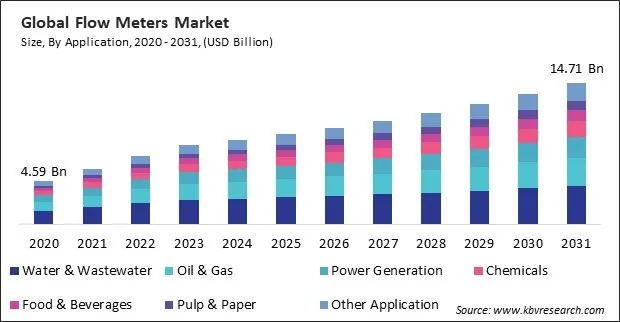
Ongoing infrastructure development projects, including construction and utilities, create demand for these meters to monitor fluid flows in various applications. Many cities are adopting smart city initiatives that involve integrating various infrastructure components. These meters, equipped with smart technologies, contribute to the real-time monitoring and management of fluid flows in smart city infrastructure. These meters in intelligent transportation systems (ITS) applications contribute to data-driven decision-making for optimizing traffic patterns. Therefore, this market is expanding significantly due to the expansion of infrastructure development.
Additionally, The emphasis on renewable energy sources, including wind and solar power, drives the demand for these meters to measure fluid flows in sustainable energy projects. These meters contribute to renewable energy projects by measuring fluid flows in district heating and cooling systems, where renewable sources such as geothermal or solar thermal contribute to thermal energy distribution. Thus, increasing renewable energy projects is a pivotal factor driving the growth of this market.
However, High-quality flow meters with advanced features can involve significant upfront costs. Cost considerations may be challenging, especially for smaller enterprises or industries with budget constraints. Installation, maintenance, energy consumption, and potential outages are all components of the total cost of ownership, which consists of the purchase price. Potential purchasers may be discouraged by the high total costs of ownership. Thus, cost considerations of these meters can slow down the growth of this market.
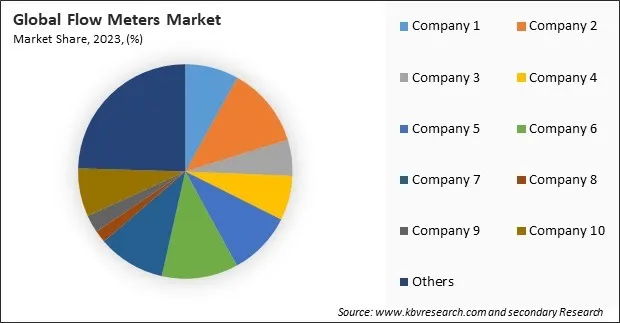
The leading players in the market are competing with diverse innovative offerings to remain competitive in the market. The above illustration shows the percentage of revenue shared by some of the leading companies in the market. The leading players of the market are adopting various strategies in order to cater demand coming from the different industries. The key developmental strategies in the market are Acquisitions, and Partnerships & Collaborations.
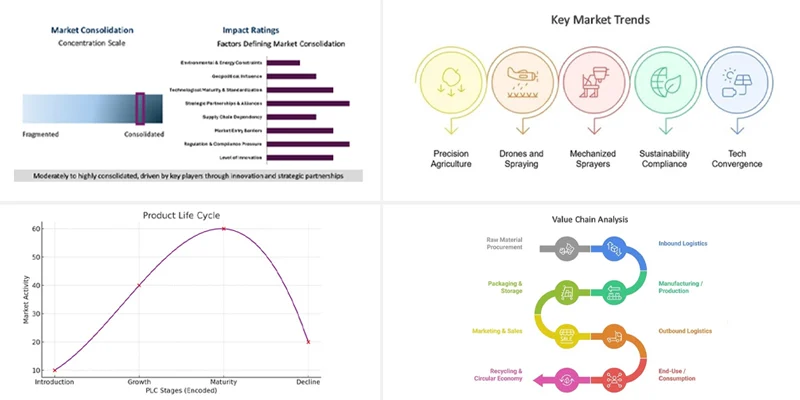
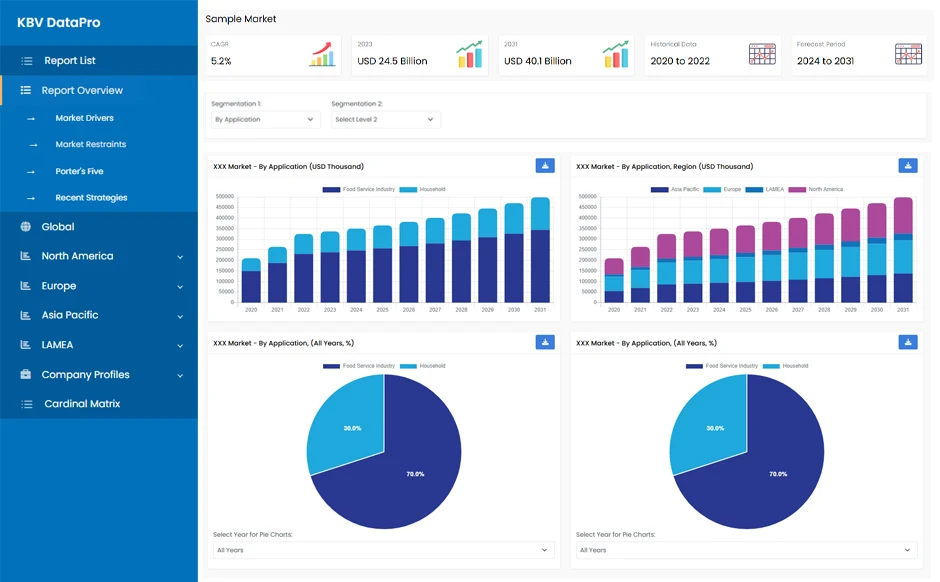
Based on application, the market is classified into water & wastewater, power generation, pulp & paper, chemicals, oil & gas, food & beverages, and others. The oil & gas segment acquired 20% revenue share in the market in 2023. The oil and gas industry’s demand for these meters is influenced by the expansion of pipeline infrastructure, the growing global energy consumption, and the implementation of rigorous emission control regulations. The need for accurate fuel measurement, leak detection, and custody transfer applications is boosting the adoption of these meters in refineries, offshore drilling, and LNG terminals. In terms of volume, the segment would register 3,787.44 Thousand Units in 2023.
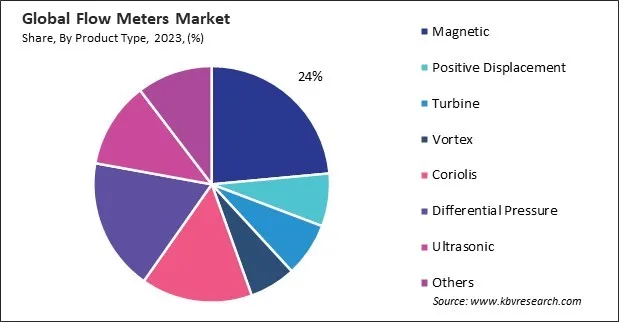
By product type, the market is categorized into magnetic, positive displacement, differential pressure, ultrasonic, Coriolis, turbine, vortex, and others. The differential pressure segment covered 12% revenue share in the market in 2023. Differential pressure flow meters quantify the flow rate by generating a pressure decrease across a flow element (such as a flow nozzle, venturi tube, or orifice plate) in the fluid path. The pressure drop is related to the flow rate, and this relationship is used to determine the flow rate. Common applications include steam flow measurement, liquid flow measurement in pipes, and gas flow measurement.
Free Valuable Insights: Global Flow Meters Market size to reach USD 14.71 Billion by 2031
Region-wise, the market is analysed across North America, Europe, Asia Pacific, and LAMEA. In 2023, the North America region witnessed 30% revenue share in the market. The United States and Canada are major contributors, with high demand for flow meters in oil & gas pipelines, power plants, and water utilities. The region’s stringent environmental regulations by agencies such as the EPA are pushing industries to adopt digital and ultrasonic flow meters for emissions control and energy efficiency.
| Report Attribute | Details |
|---|---|
| Market size value in 2023 | USD 8.35 Billion |
| Market size forecast in 2031 | USD 14.71 Billion |
| Base Year | 2023 |
| Historical Period | 2020 to 2022 |
| Forecast Period | 2024 to 2031 |
| Revenue Growth Rate | CAGR of 7.5% from 2024 to 2031 |
| Quantitative Data | Volume in Thousand units, Revenue in USD Billion, and CAGR from 2024 to 2031 |
| Number of Pages | 1233 |
| Number of Tables | 2650 |
| Report coverage | Market Trends, Revenue Estimation and Forecast, Segmentation Analysis, Regional and Country Breakdown, Market Share Analysis, Porter’s 5 Forces Analysis, Company Profiling, Companies Strategic Developments, SWOT Analysis, Winning Imperatives |
| Segments covered | Application, Product Type, Region |
| Country scope |
|
| Companies Included | ABB Group, Emerson Electric Co., General Electric Company, Hitachi, Ltd., Honeywell International, Inc., Siemens AG, Yokogawa Electric Corporation, VSE Volumentechnik GmbH, Hontzsch GmbH & Co. KG, and Krohne Group |
By Application (Volume, Thousand Units, USD Billion, 2020-2031)
By Product Type (Volume, Thousand Units, USD Billion, 2020-2031)
By Geography (Volume, Thousand Units, USD Billion, 2020-2031)
This Market size is expected to reach $14.71 billion by 2031.
Rapid Expansion Of Infrastructure Development are driving the Market in coming years, however, Substantial Cost Considerations Of Flow Meters restraints the growth of the Market.
ABB Group, Emerson Electric Co., General Electric Company, Hitachi, Ltd., Honeywell International, Inc., Siemens AG, Yokogawa Electric Corporation, VSE Volumentechnik GmbH, Hontzsch GmbH & Co. KG, and Krohne Group
The expected CAGR of this Market is7.5% from 2023 to 2031.
The Water & Wastewater segment led the maximum revenue in the Market by Application in 2023, thereby, achieving a market value of $4.0 billion by 2031.
The Asia Pacific region dominated the Market by Region in 2023, and would continue to be a dominant market till 2031; thereby, achieving a market value of $5.2 billion by 2031.
Our team of dedicated experts can provide you with attractive expansion opportunities for your business.
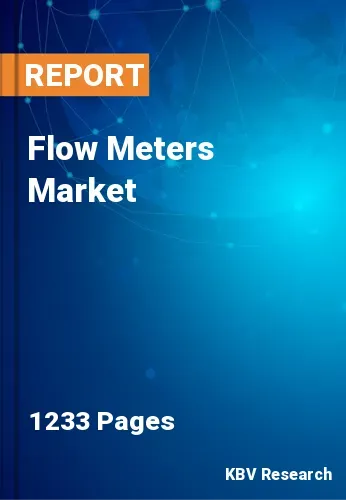
 Drivers
Drivers
 Restraints
Restraints
 Opportunities
Opportunities
 Challenges
Challenges
